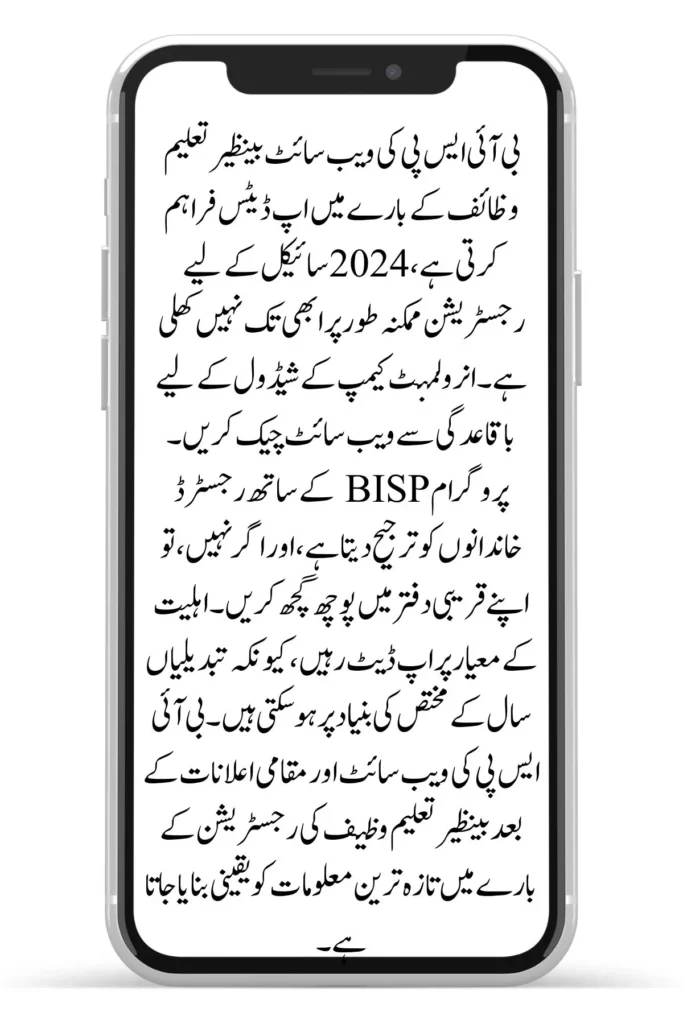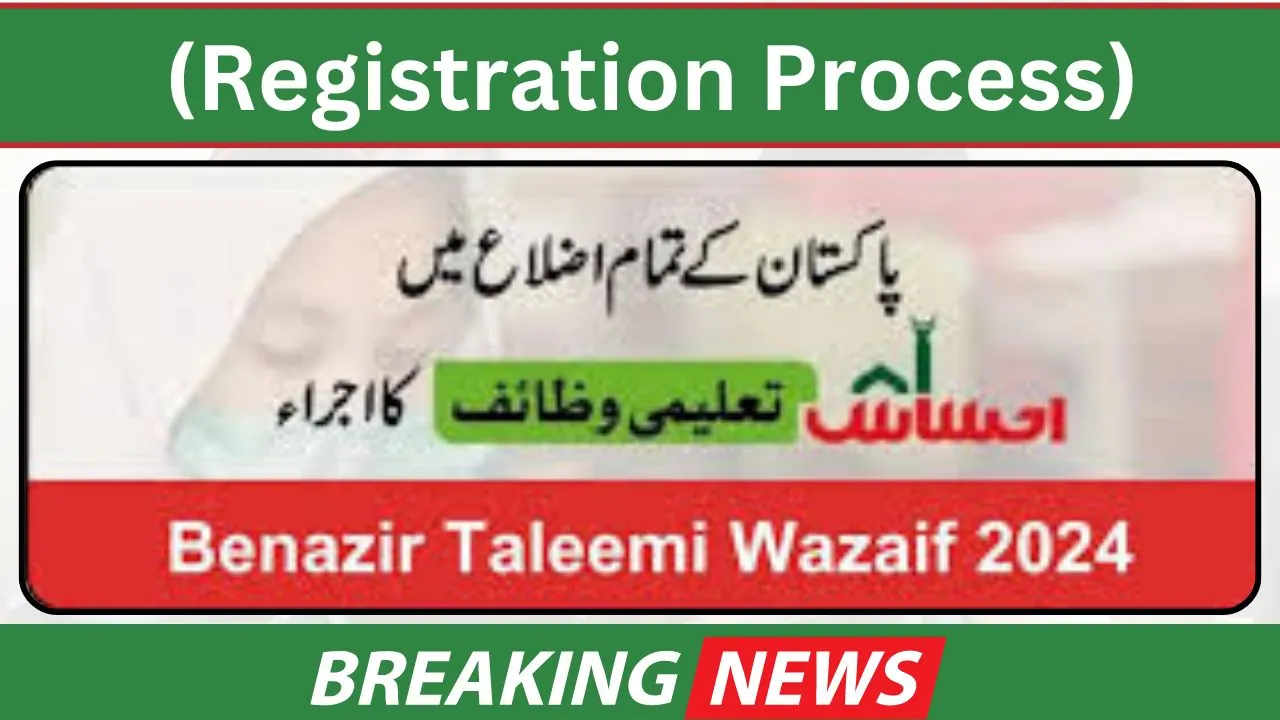Benazir Income Support Programme (BISP) provides Benazir Taleemi Wazaif, an educational scholarship program, to help qualified families in Pakistan. This initiative attempts to boost school enrollment, particularly among girls, by providing financial assistance for basic, intermediate, and higher secondary education.
This guide will bring you through the Benazir Taleemi Wazaif registration process for 2024 in an understandable and informative manner. We’ll examine eligibility requirements, required documentation, and the newest changes.
Contents
Who is Eligible for Benazir Taleemi Wazaif?
The Benazir Taleemi Wazaif is a comprehensive education initiative aimed at promoting girls’ education. The program, which is registered with BISP, caters to children aged 4-22 years, enrolled in primary, secondary, and higher secondary education. Families living below the national poverty line are given priority. To check your family’s registration status, visit a nearby BISP office or check online through the Ehsaas Program CNIC check service.
| Registration Process | Required Documents |
| No online registration; enroll at designated BISP offices. | CNIC of a registered beneficiary – Child’s B-Form Birth Certificate – School/College Admission Slip |
Also Read: Benazir Taleemi Wazaif New Update: A Beginner’s Guide for Parents in 2024
How to Register for Benazir Taleemi Wazaif
- No online registration process.
- Enrollment occurs at designated BISP field offices or enrolment camps.
- Step-by-step guide:
- Gather the CNIC (Computerized National Identity Card) of the registered beneficiary.
- Gather the Child’s B-Form Birth Certificate.
- Verify the School/College Admission Slip with the child’s class, school/college name, and other details.
Register offline for Benazir Taleemi Wazaif in 2024
- Visit an Enrolment Camp/BISP Field Office: Stay informed about enrolment camp schedules by contacting your local BISP office or checking their website for announcements.
- Submit Documents and Complete Enrollment: At the enrolment camp/office, a BISP representative will assist you in filling out the enrollment form and submitting the required documents. Verify that all the information is accurate and complete.
- Verification and Approval: BISP will verify the submitted documents and your family’s eligibility, ensuring your child is enrolled in the program upon successful verification.
Benazir Taleemi Wazaif Slip:
Once your child is registered, you’ll receive a Benazir Taleemi Wazaif slip. This slip serves as a confirmation of your child’s enrollment and scholarship. Keep it safe for future reference. It might be required for:
- Tracking scholarship disbursement status.
- Reporting any changes in your child’s education (e.g., class advancement).
- Addressing any issues related to the scholarship.

Latest Updates on Benazir Taleemi Wazaif
The BISP website provides updates on Benazir Taleemi Wazaif, with registration for the 2024 cycle potentially not yet open. Regularly check the website for enrolment camp schedules. The program prioritizes families registered with BISP, and if not, inquire at your nearest office. Stay updated on eligibility criteria, as changes occur based on the year’s allocation. Following the BISP website and local announcements ensures the latest information on Benazir Taleemi Wazaif registration.
Conclusion
The Benazir Taleemi Wazaif program is a crucial initiative in Pakistan aimed at enhancing education through eligibility criteria, registration processes, and staying updated on the latest developments.
Also Read: Enrolling for Scholarships: Registration Process for Benazir Taleemi Wazaif in 2024
FAQs
What documents are required for registration?
You need to provide the CNIC of the registered beneficiary, the child’s B-Form Birth Certificate, and the School/College Admission Slip with relevant details.
Who is eligible for Benazir Taleemi Wazaif?
Benazir Taleemi Wazaif targets children aged 4-22 enrolled in primary, secondary, and higher secondary education, especially those from families below the national poverty line. Priority is given to girls’ education.
